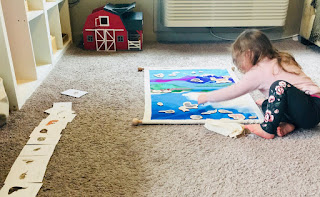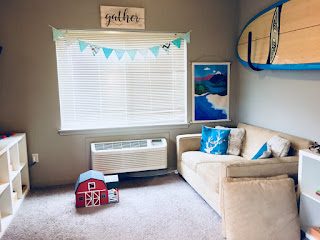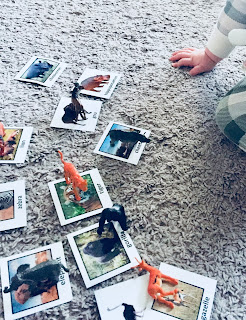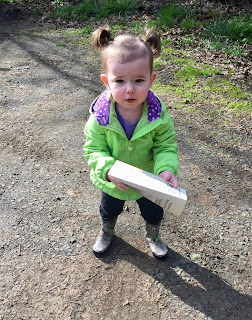
While our preschooler has spent a lot of time on geography-related work, I didn't realize exactly how much until I sat down to write this first Physical Geography post. It has been a slow, comprehensive, interdisciplinary approach, reflecting the harmony of the Montessori cultural curriculum in primary education.
Disclosure of Material Connection: Some of the links in the post are “affiliate links.” This means if you click on the link and purchase the item, I will receive an affiliate commission. Amazon links are not affiliate links. You can read my full affiliate disclosure.
The Beginning
We began with an introduction to the big picture of Physical Geography, our universe, and we are slowly and intentionally flowing into the smaller details before moving on to Political Geography.
To introduce the universe, and our solar system, we incorporated our Montessori Books About the Universe with our use of the Montessori Sandpaper (Land and Water) Globe and various items to represent the sun (orange, light bulb, orange ball, etc.). We discussed and demonstrated how the planets move around the sun, seasons, and some differences and similarities between the planets. Our preschooler showed a lot of interest in the colors of the planets and their temperatures.
Since then, our Montessori Geography experiences have slowly moved on to Earth and the concepts of energy, air, water, and soil. Our preschooler spends a lot of time in nature, collecting items as we go, so these are very organic learning experiences for her. Flowers and sticks, rocks, sand, and shells, along with dirt, water, and sometimes mud all make their way into our home on a regular basis while our young naturalist orders and arranges everything on the floor or her table, mentally cataloguing her discoveries. There are so many books we have used along with these lessons that I can't list them all here but you can check out our book rotation posts if you're interested.
We also take frequent field trips to state and local parks, our local riverbank, the beach, wildlife preserves, farms, fishing holes, aquariums, the zoo, and even whale watching on a fishing charter so our preschooler is regularly exposed to various wildlife and experiences with a systems-thinking approach. We have used exercises such as nature journaling, a nature headdress, listening walks, storytelling, looking at books of maps, demonstrating the difference between a globe and a map projection, and allowing our daughter to "navigate" using maps provided at various locations to support those experiences.
In addition to engaging in nature play on a regular basis, our daughter frequently works with her Land Air Water mat. This is a great way to reinforce the concepts of water flow, animal habitats and how animals move, as well as object-to-picture matching (the matching work she was already accustomed to doing using other materials, starting at age 18 months). She frequently pulls her Terra wooden barn and Schleich animals over to the mat to extend that work. When she's not using the mat, we hang it on the wall for easy access.
Get a $15 coupon towards your first Waseca Biomes purchase here.



Just a sidenote: We've invested in several Montessori Geography materials from Waseca, with the mindset that we would like to spend a little more on really beautiful Geography and Science materials for use by all of our children. However, this is certainly not required. There are plenty of Montessori distributors and DIY materials that can be substituted at a lower cost. Kaia happens to love the Waseca materials, so it's a matter of personal preference.
If you'd like some free materials for your preschooler, I would highly recommend visiting Department of Fish & Wildlife. We have some very attractive habitat illustrations and posters provided by them for the purposes of education and conservation.
Future Work
When our daughter has finished her work with these materials, we will move on to land and water forms, using books, land and water form cards, and her landform mat. Until then, we will leave you with a few pictures from younger prerequisite experiences that served as preparation for her primary Physical Geography work.






More Montessori Geography
Thanks for stopping by!
- Kristin





Leave a Reply